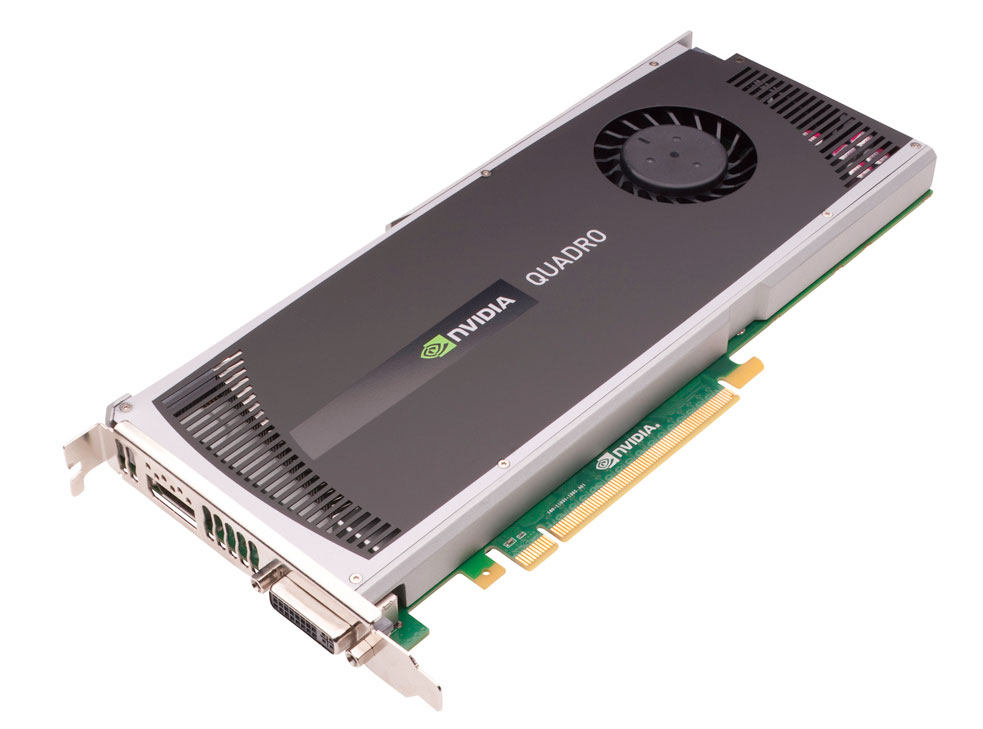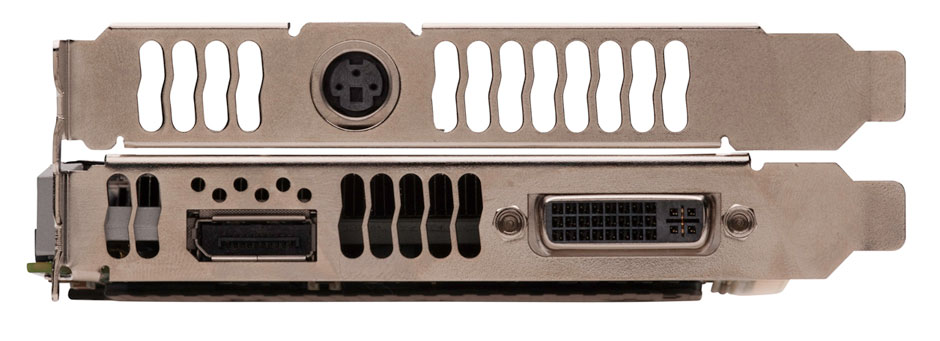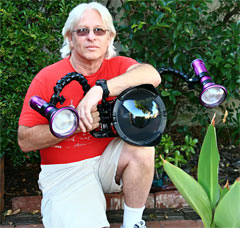September 10, 2012
NVIDIA
Review by Steve Douglas
The NVIDIA Quadro 4000 graphics card for Mac has been on the market for awhile now, which doesn't make this review antiquated; in fact, having lived and worked with it for awhile now has given me a truer opportunity to review it then when briefly using any product and writing an article based upon limited time usage.

For the last two years I have been using an NVIDIA FX4800 graphics card in my 2 x 2.66 GHz 6 Core Intel Xeon Mac Pro with 20 GB ram. I haven't had a single complaint or concern with the FX4800, but since the NVIDIA Quadro 4000 graphics card for Mac has been in production for awhile and has grown so popular with so many, I thought I would take a hard look at it myself. I have now had it installed for a couple of months where the 4000 card has been in constant use. Once again, no complaints here and there are some real benefits to installing this card.
Lets take a look at the many positives the Quadro 4000 presents for todays editors. The NVIDIA Quadro FX 4800 is not inexpensive costing $1799.00.msrp. You got the performance and reliability your dollars were paying for, never the less, it was a big hunk of change in our country's dour economic times, and while this might not have been an obstacle to the production houses and individuals, for many 'do it all' editors, the cost may have been prohibitive.
The NIVIDA Quadro 4000 for Mac card goes a long way towards providing the excellent performance of the NVIDIA Quadro FX4800 for Mac card, surpassing it in some areas, while significantly presenting a lower price of $1199.00 msrp. That's a 33% reduction, and anytime I can save myself $600 is an opportunity I can't possibly pass up, though my wife would want to immediately spend that new found savings on new living room curtains that we really don't need.
Need to cut back on your electric bill? The Quadro 4000 uses 5% less power at 142W versus the 150W of the Quadro FX4800. At the same time the Quadro 4000 contains 256 GPU cores and 2GB memory as compared to the 192 GPU cores and 1.5GB of the FX4800 which translates into a 33% increase on both fronts.
Something I really appreciated is that by installing the Quadro 4000, with its significantly smaller footprint, I was able to free up one of the PCI express slots that the larger Quadro FX4800 was taking up. Installation is a fairly simple process connecting via a single 6 pin auxiliary power connection. Your monitor connects to one of the display port or DVI connectors on the back of the graphics card.

When coupled together the NVIDIA Quadro 4000 for Mac and Adobe Premiere Pro CS6, and other of the editing applications in the Adobe collections, can provide a tightly knit, thoroughly integrated and time saving combination when creating multi-layered video projects, and playing them back in real time. The Mercury Playback engine utilizes NVIDIA CUDA, a computing platform and programing model enabling serious increases in performance by harnessing the ability of the graphics processing unit, to speed almost all areas of the playback workflow. The NVIDIA Quadro 4000 provides the ample acceleration power for effects and transitions, color space conversions, video compositing, opacity, motion, blend modes and video deinterlacing. Add all the filters, scaling effects, mattes, color correction and compositing modes you want and you will still be able to view in real time without having to render either previews or having to reduce working playback resolution. In Premiere Pro, previews could all be done in real time without the need to render.
Unfortunately, when using FCP X, many of these same effects and transitions, especially so from third party plug-in software companies, rendering can still seem glacial in comparison to their usage in Adobe software. FCP X is a totally different application. Final Cut X was written to deliver excellent performance even with smaller computers and slower (or less powerful) processors, and, for this, it relies on the extra power of the graphics card. In order to have access to this extra horsepower Apple uses Open CL, which some consider to be a better technology than CUDA. There is still no word on OpenCL support for this card. At the last minute, Apple pulled the plug on this from Lion. NVIDIA cards, like the NVIDIA Quadro 4000 card I am using, are good for CUDA but not as strong in Open CL support, thus, they are less able to provide the same speed and power when working with FCP X. I do wish that NVIDIA and Apple would work together to find a way to integrate Apple's open CL to function as fast as it does with the NVIDIA's CUDA and the Mercury Playback Engine of Adobe Suite software. I am not an engineer so I can't speak of the difficulties that that may entail, but it is on my bucket list of hopes.
This does not mean that the NVIDIA Quadro 4000 for Mac doesn't provide more than adequate speed in either Final Cut Studio or FCP X. I have been very happy with it and have never had a problem of any kind with either the aforementioned Quadro FX4800 or my current Quadro 4000. I just wish that I could view things in FCP X in real time as one can do in Premier Pro for which Adobe has expanded both performance and features available in the Mercury Playback Engine.
An easily overlooked feature, found in your system preferences is the CUDA preferences icon which, when clicked, enables you to quickly check to see if there are any new CUDA Updates available. I just went there myself and saw that an update was, indeed, waiting for me. I closed all applications and performed the update without muss or fuss.

There is no question that the graphics card installed in any computer, Mac or PC, plays an important and integral part in how efficient your editing proceeds. With years of experience having used the NVIDIA Quadro FX4800 and now the NVIDIA Quadro 4000 card, with models for both PC and MAC, I can assuredly state that the NVIDIA cards are made to perform reliably and meet or exceed the expectations you might have when deciding to move up to the quality and performance that the NVIDIA 4000 produces.

Steve Douglas is a certified Apple Pro for Final Cut Pro 7 and underwater videographer. A winner of the 1999 Pacific Coast Underwater Film Competition, 2003 IVIE competition, 2004 Los Angeles Underwater Photographic competition, and the prestigious 2005 International Beneath the Sea Film Competition, where he also won the Stan Waterman Award for Excellence in Underwater Videography and 'Diver of the Year', Steve was a safety diver on the feature film "The Deep Blue Sea", contributed footage to the Seaworld Park's Atlantis production, and productions for National Geographic and the History channels. Steve was a feature writer for Asian Diver Magazine and is one of the founding organizers of the San Diego UnderSea Film Exhibition. He is available for both private and group seminars for Final Cut Pro and leads underwater filming expeditions and African safaris with upcoming excursions to the Philippines, Bali, Raja Ampat, Indonesia, and the Maldives Islands. Feel free to contact him if you are interested in joining Steve on any of these exciting trips. www.worldfilmsandtravel.com